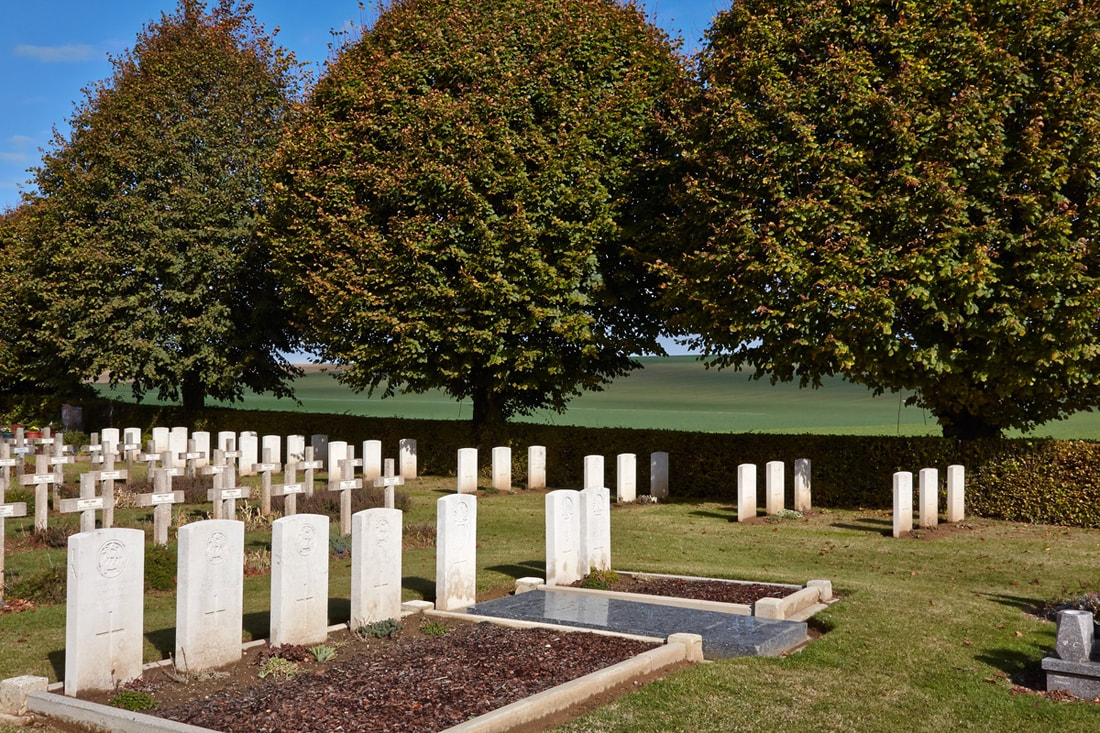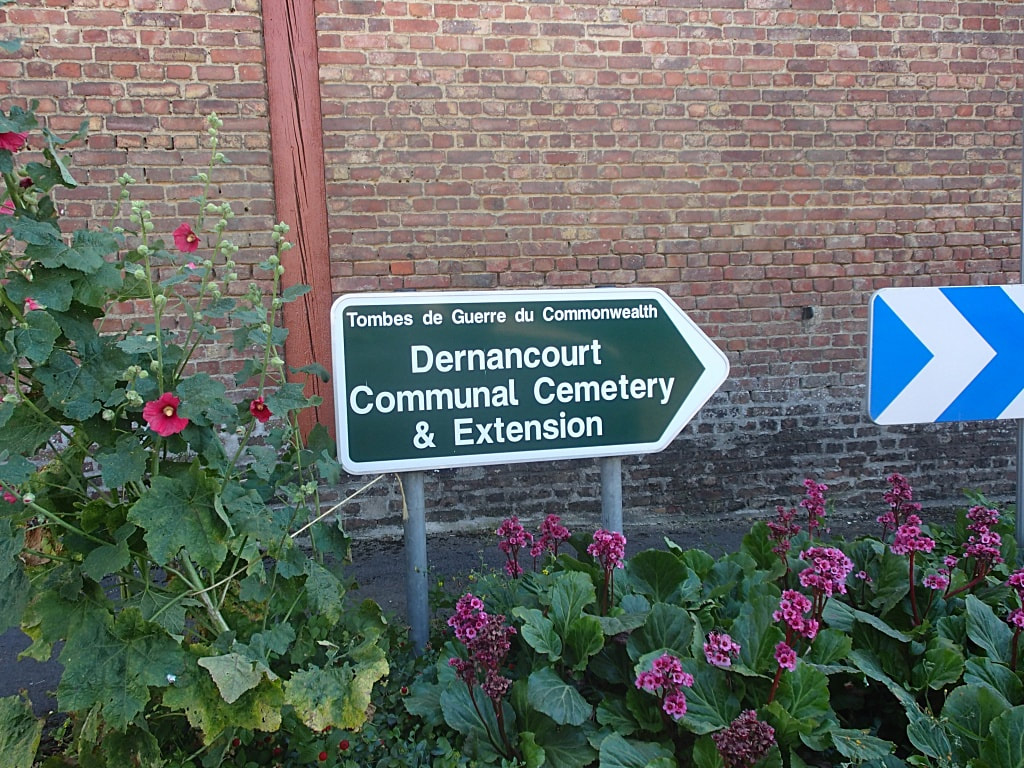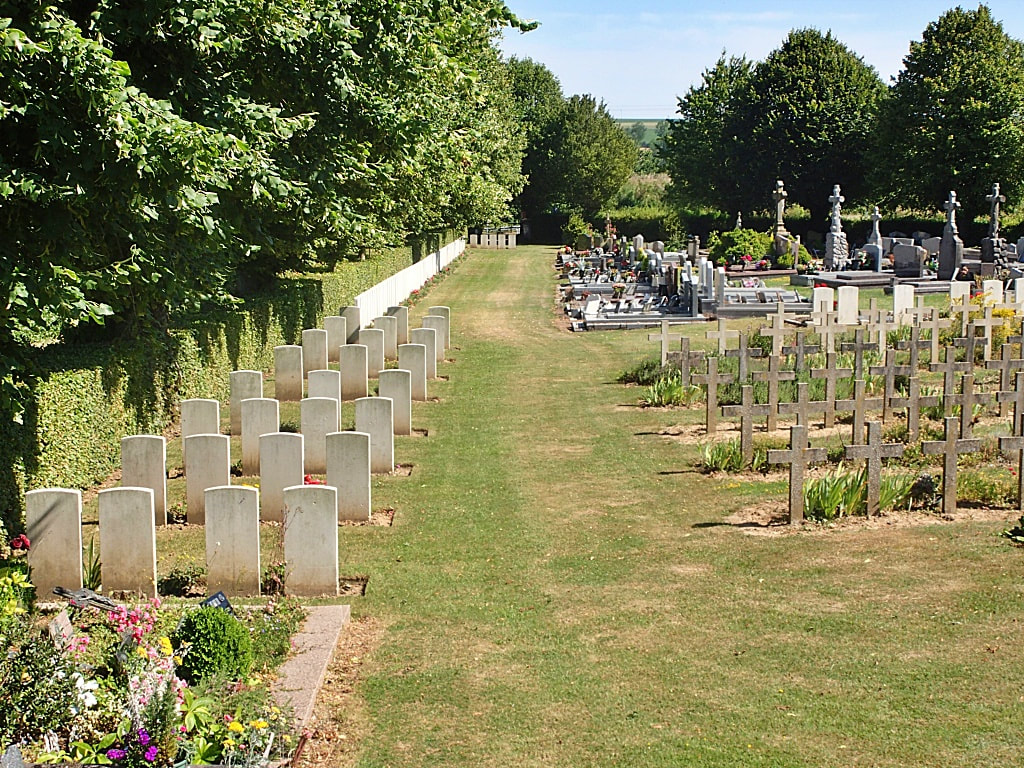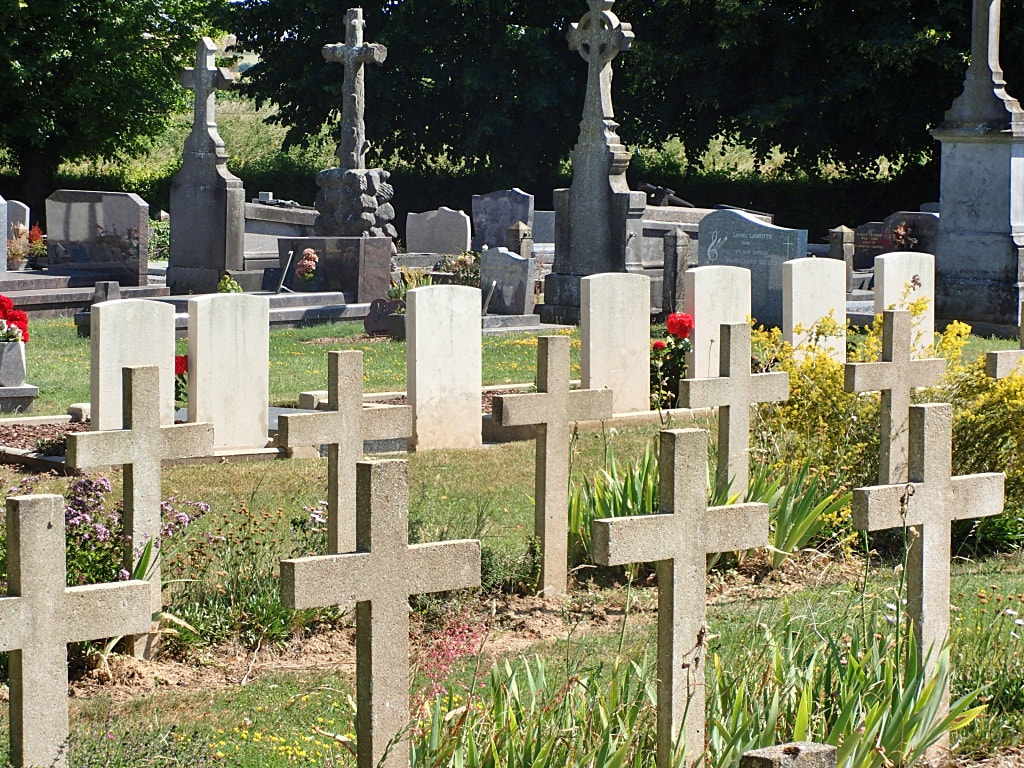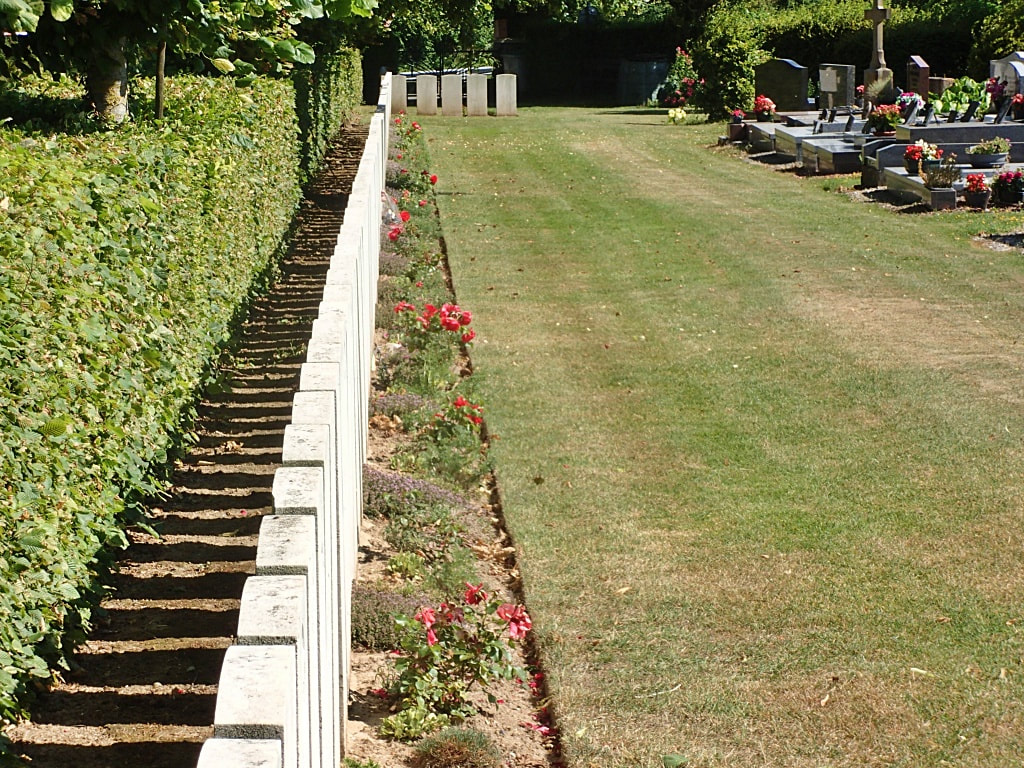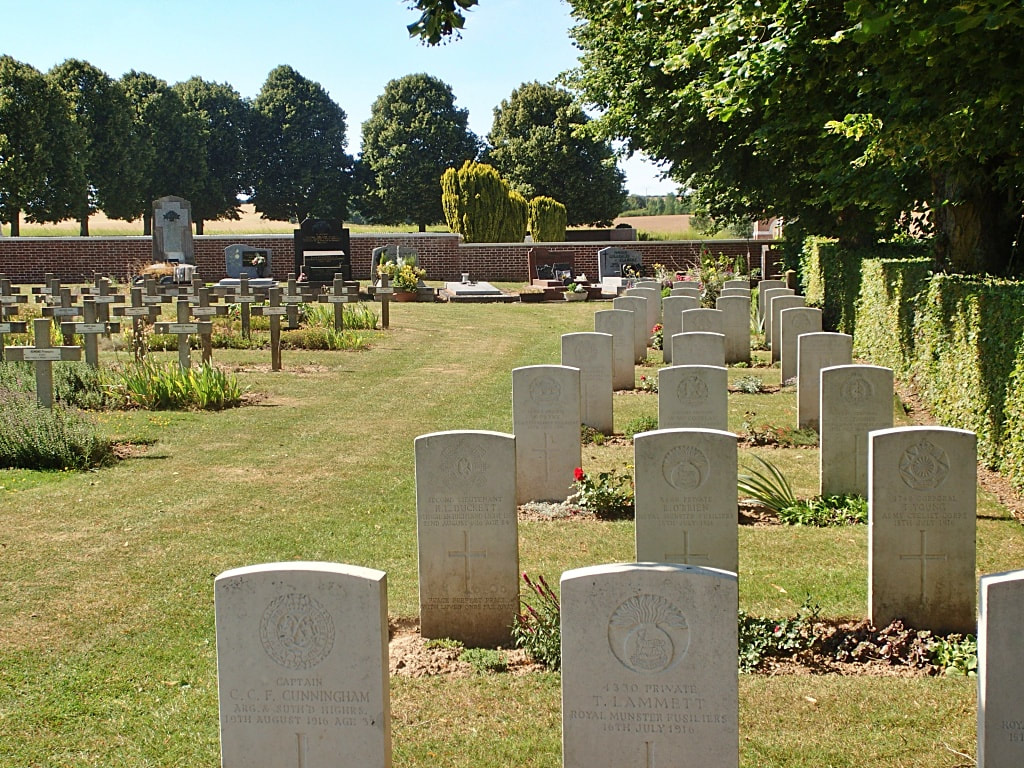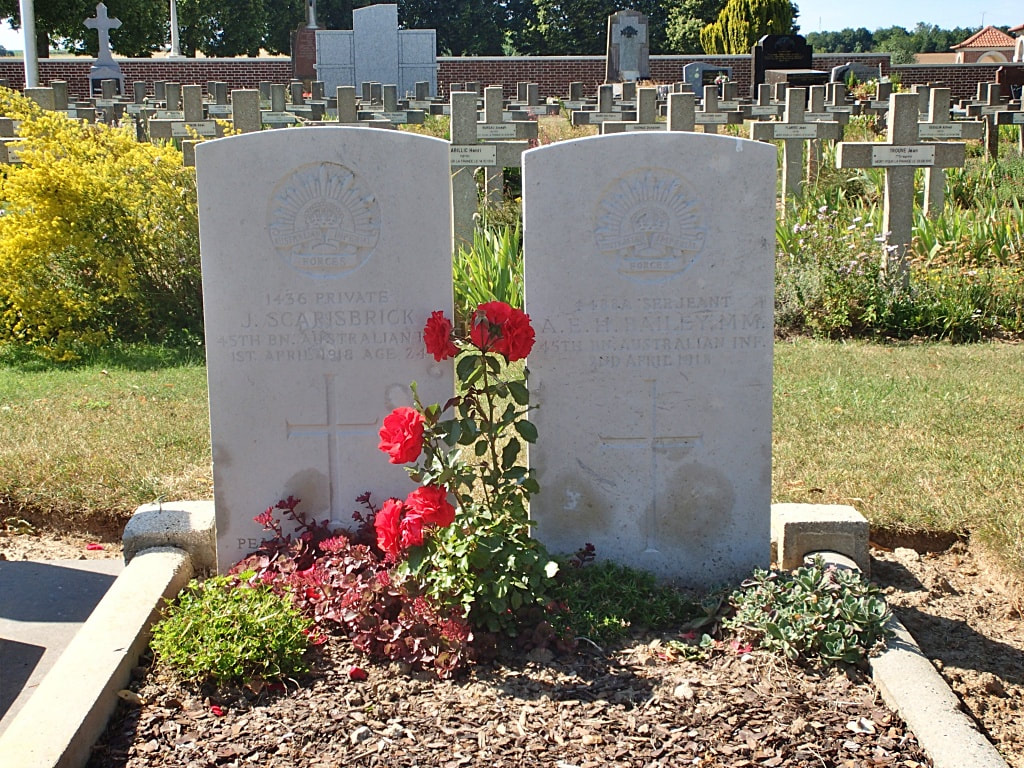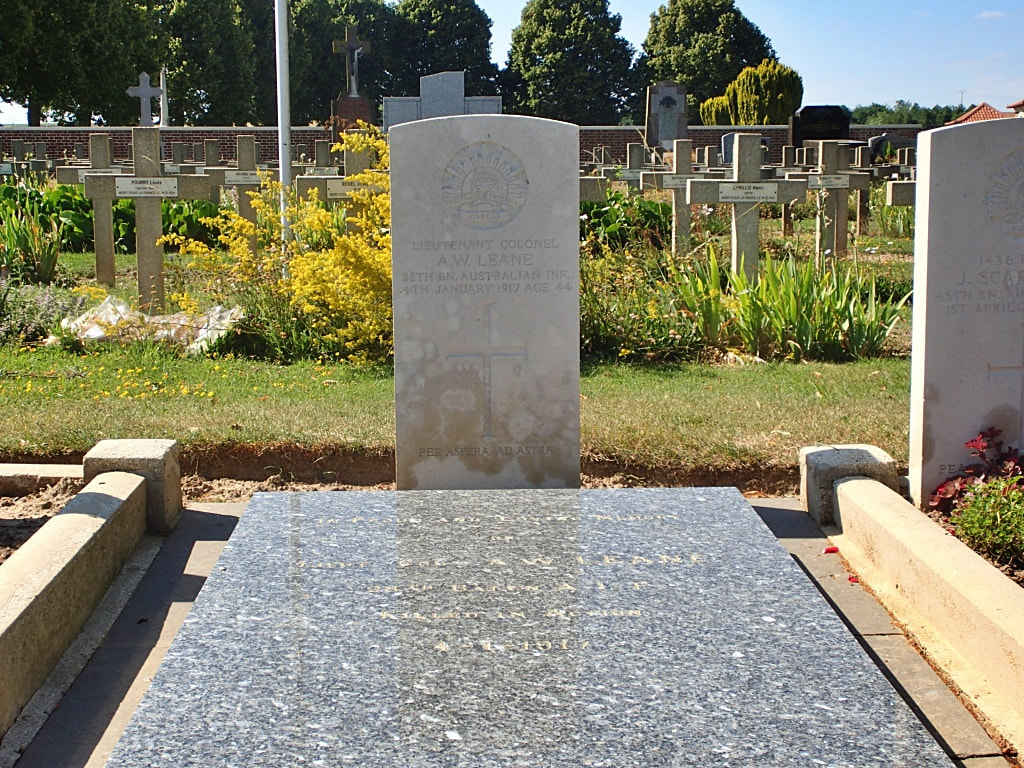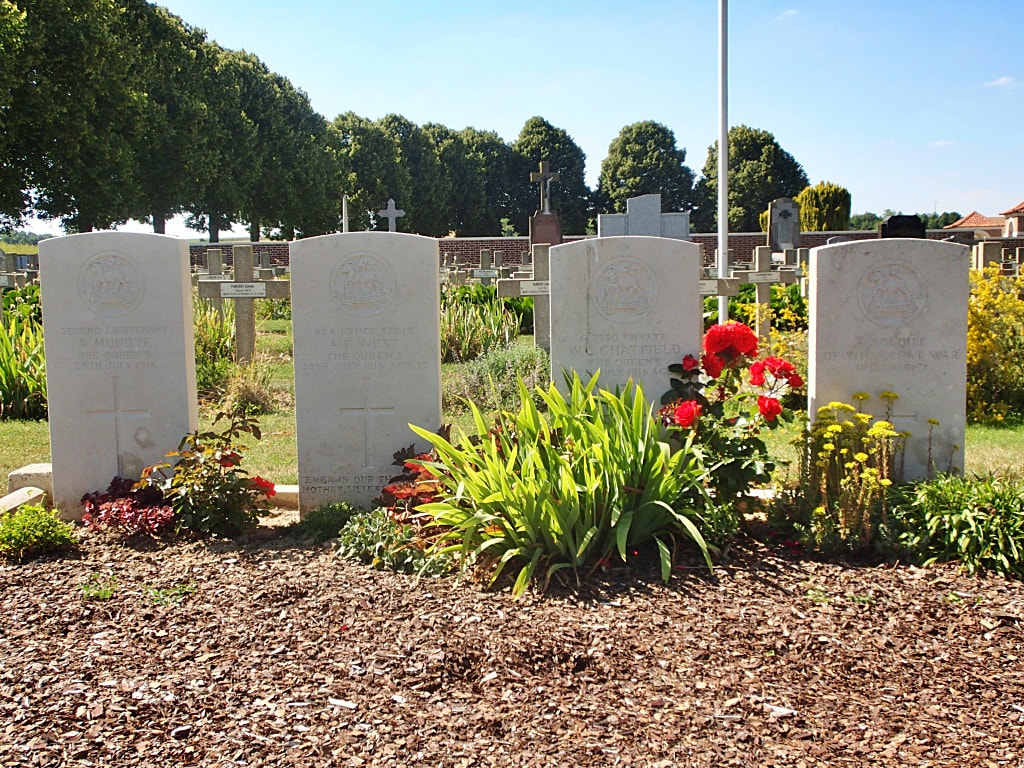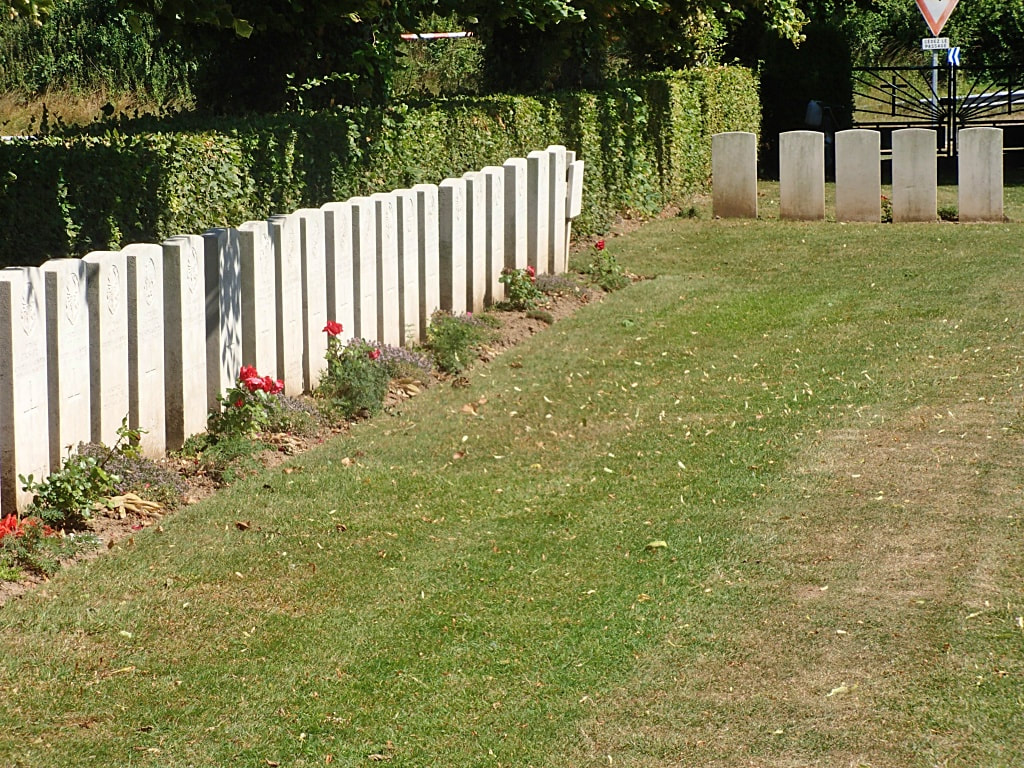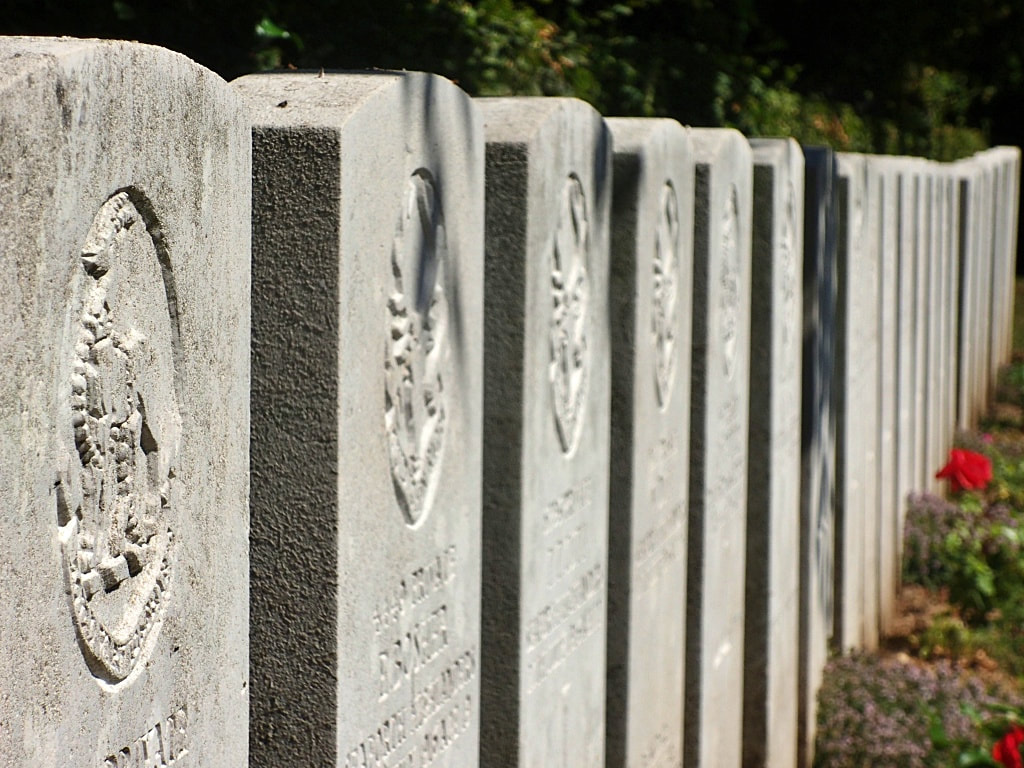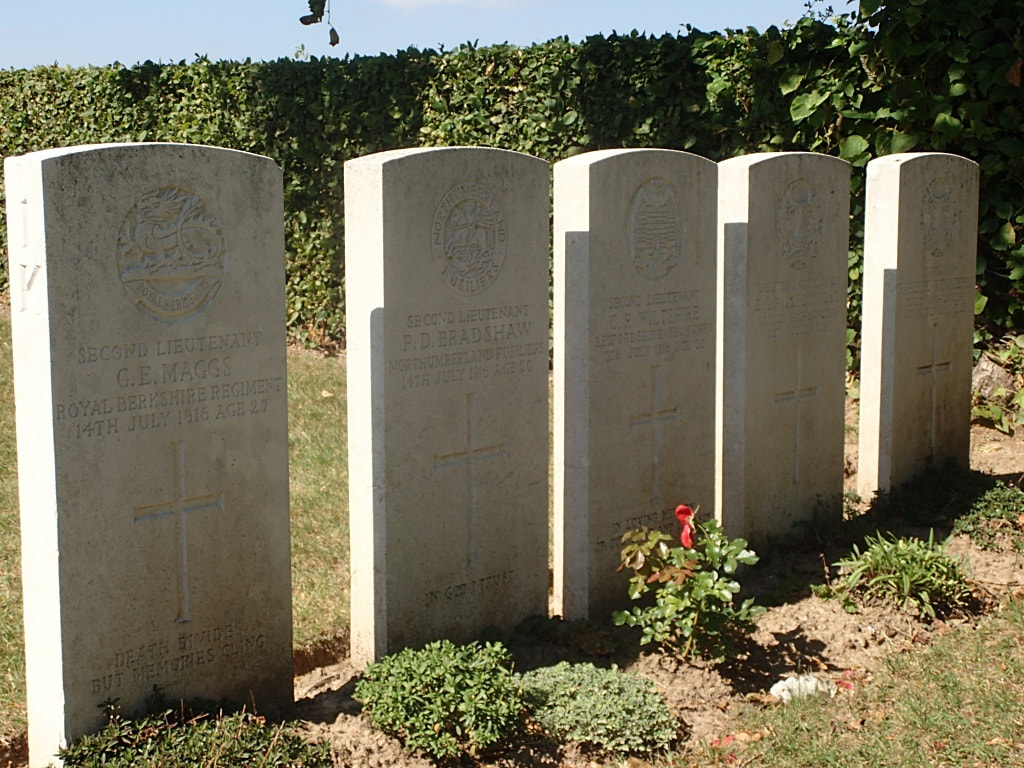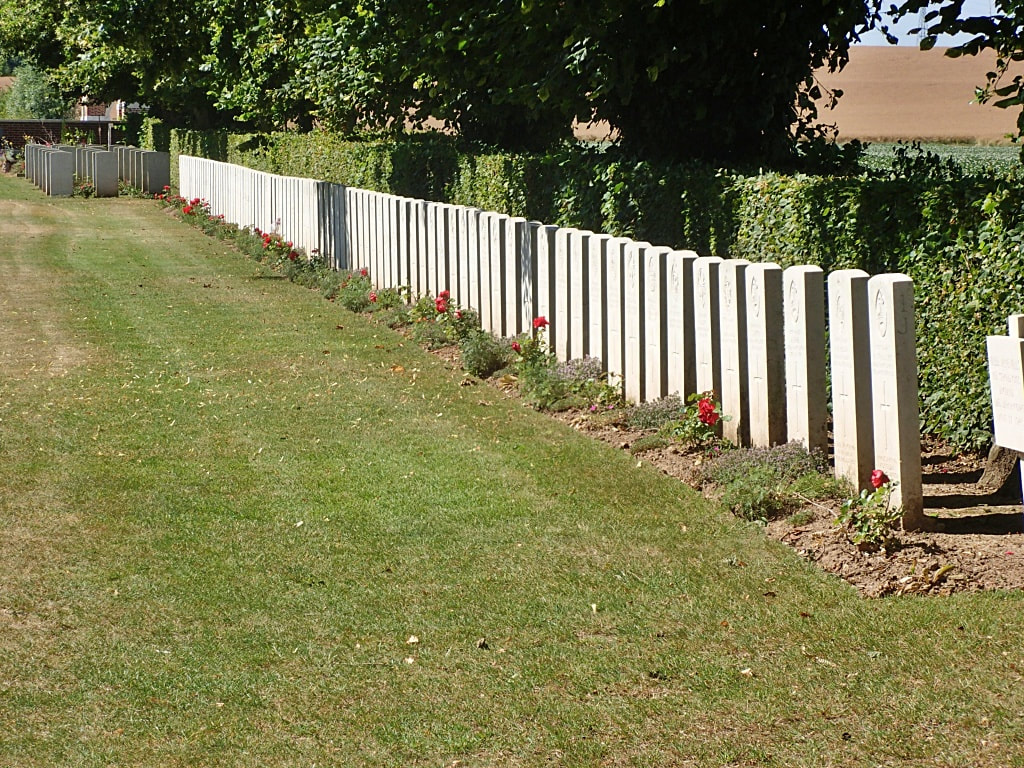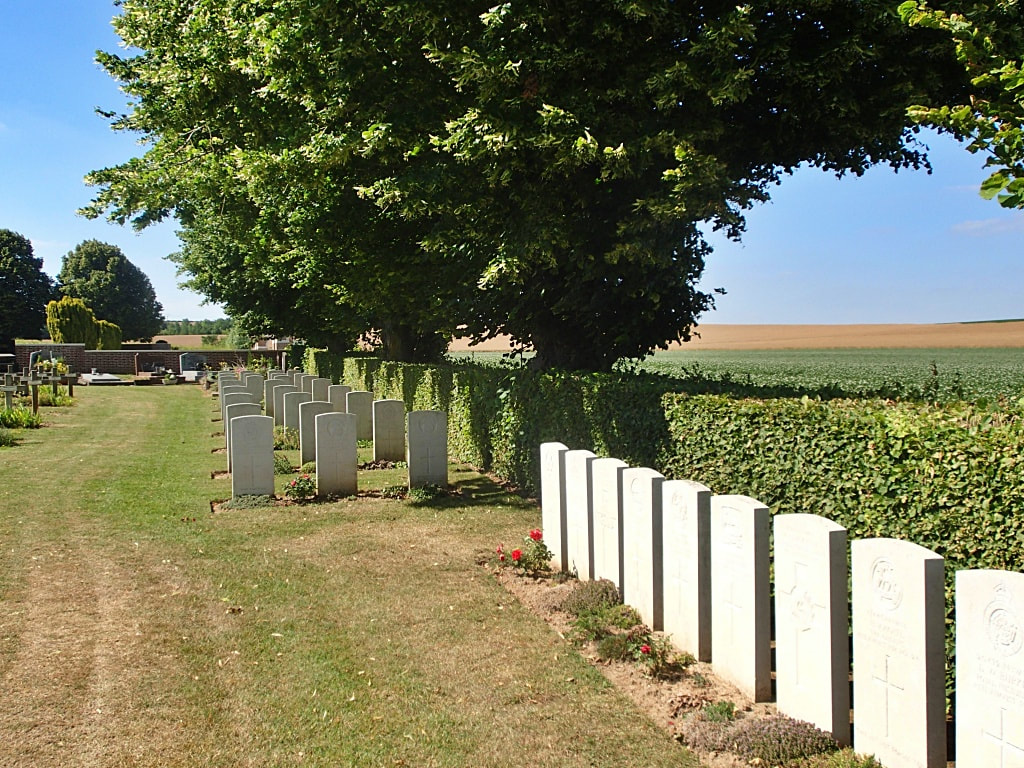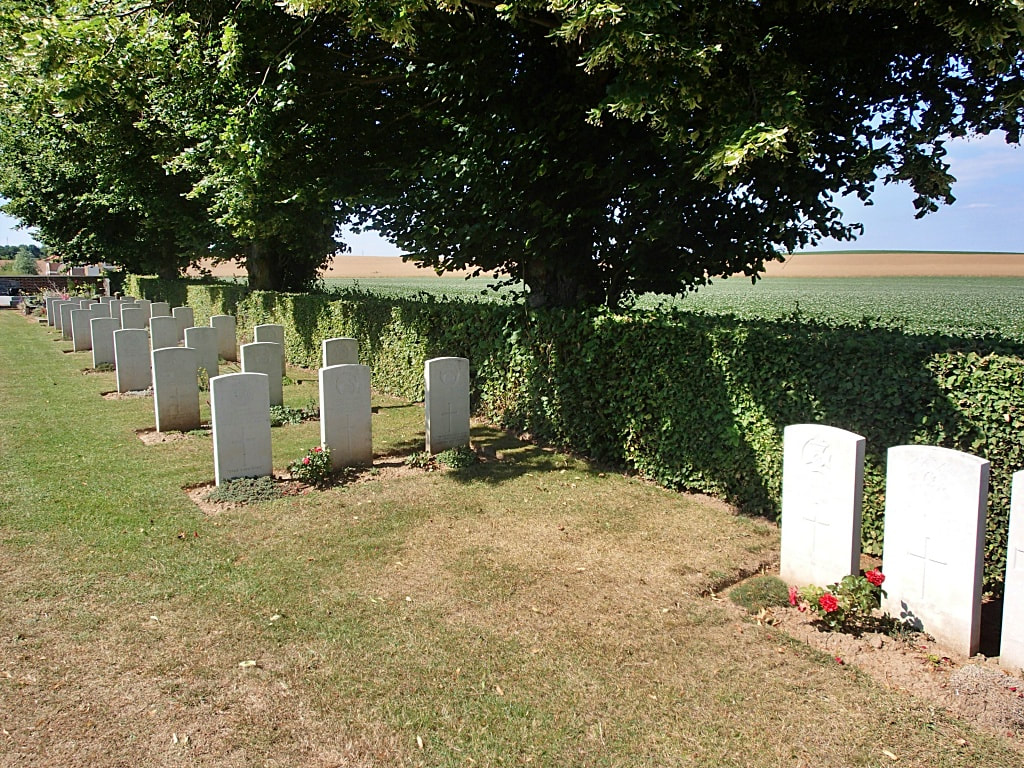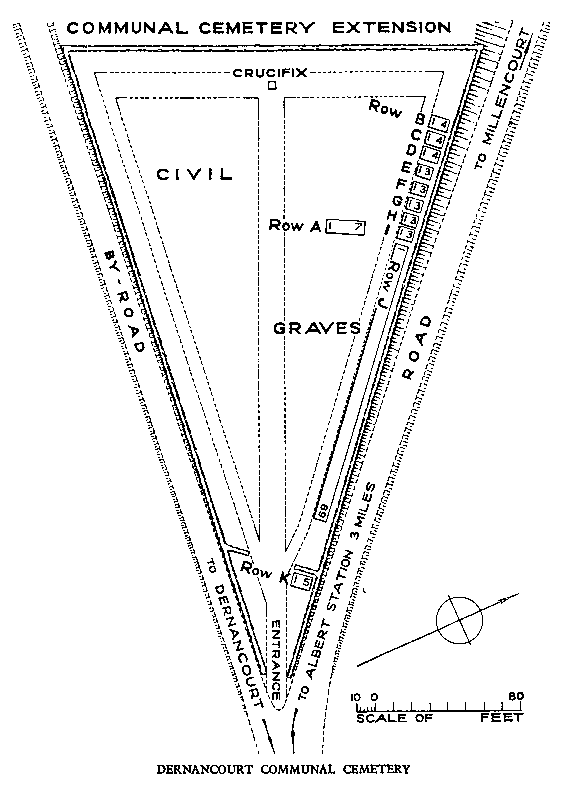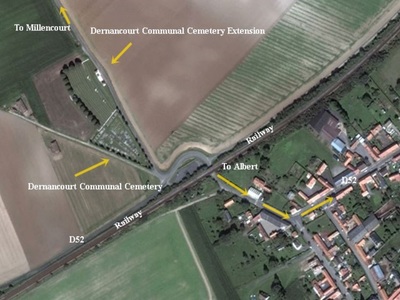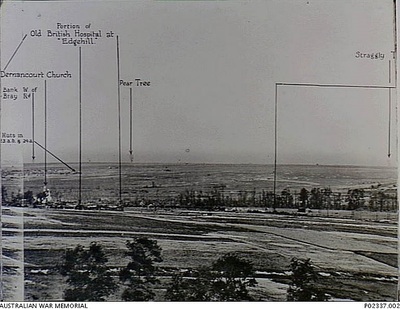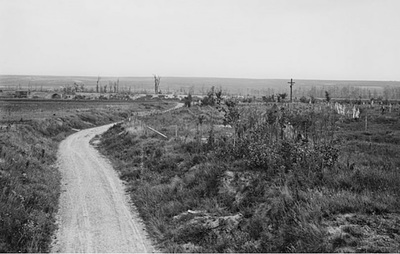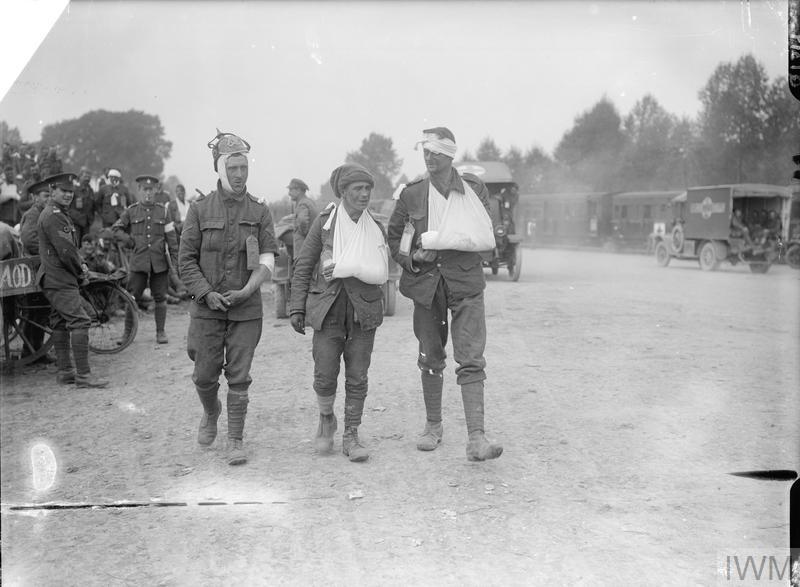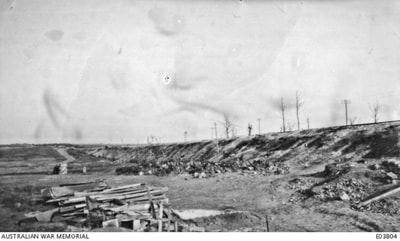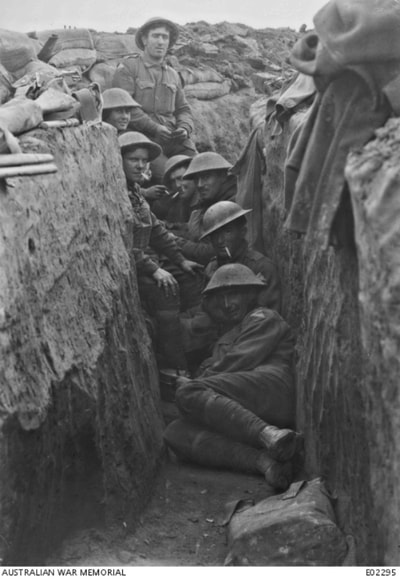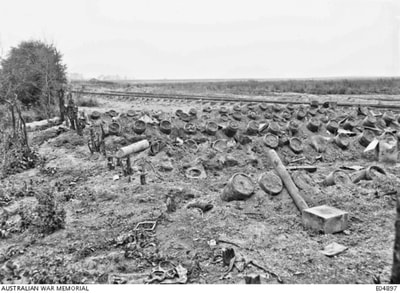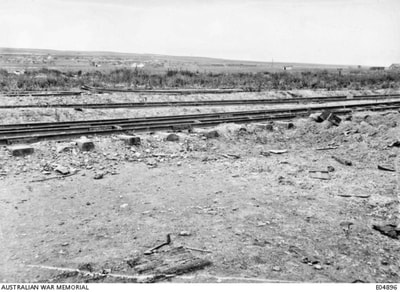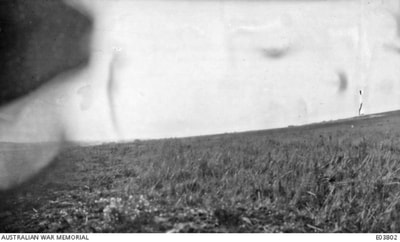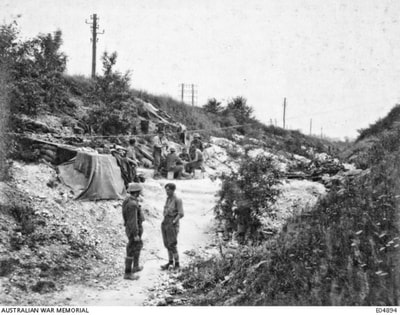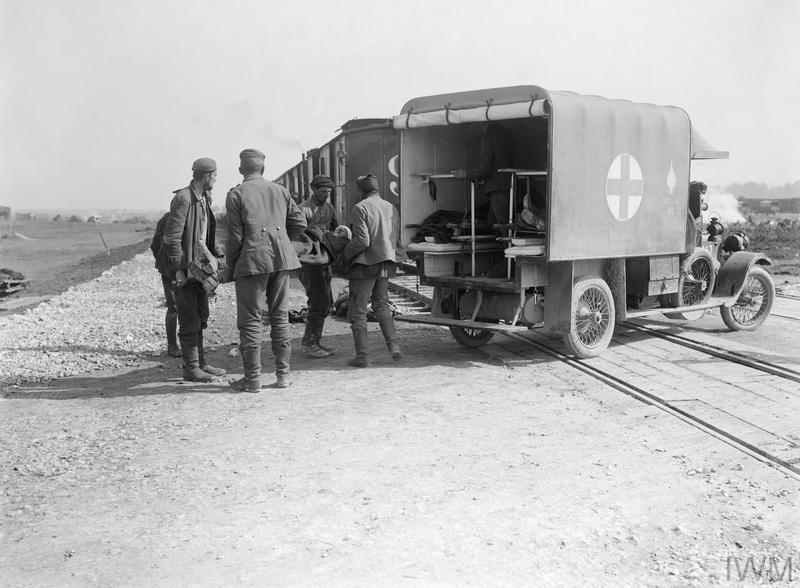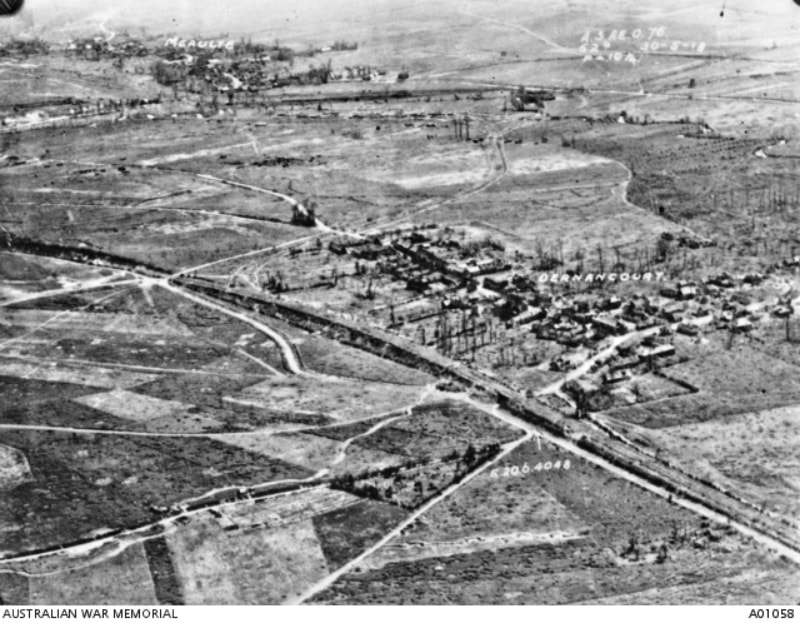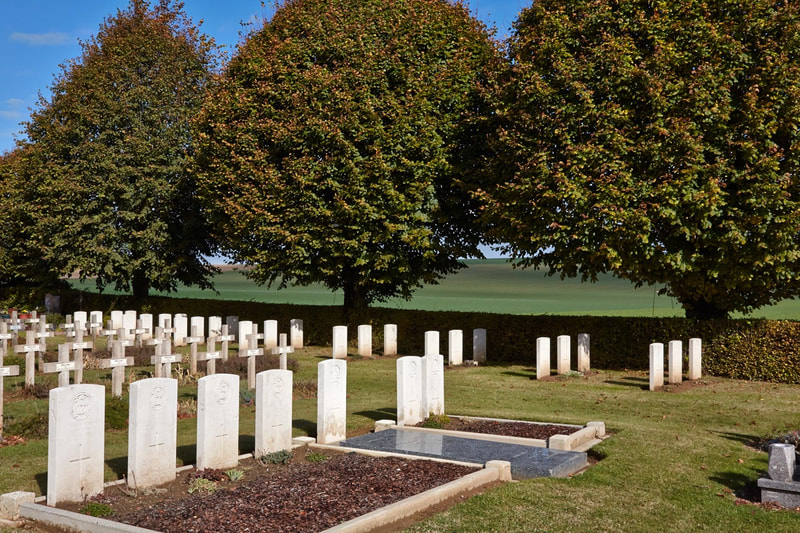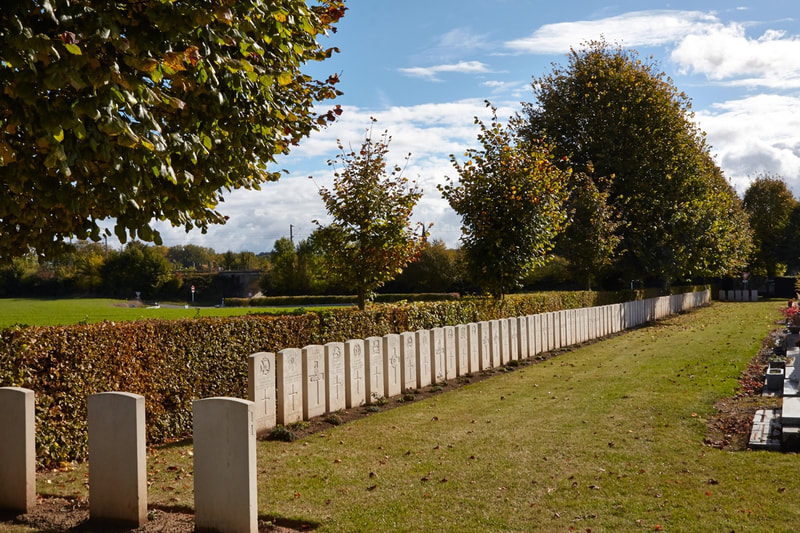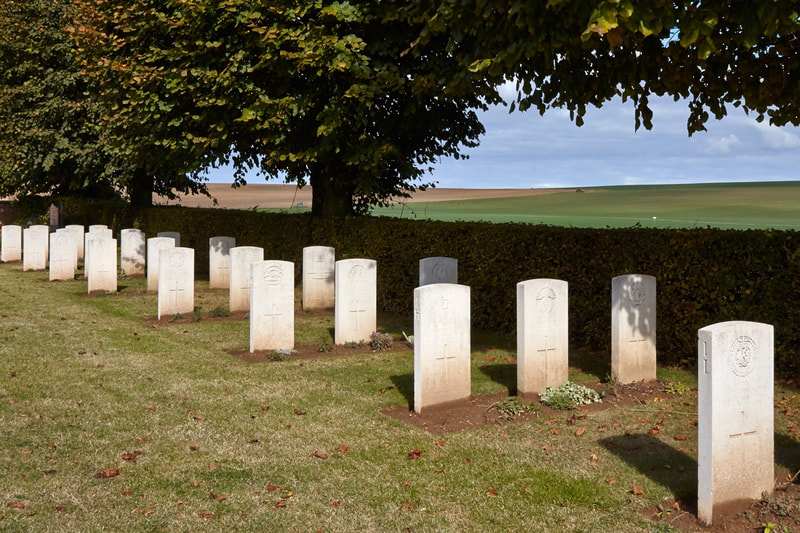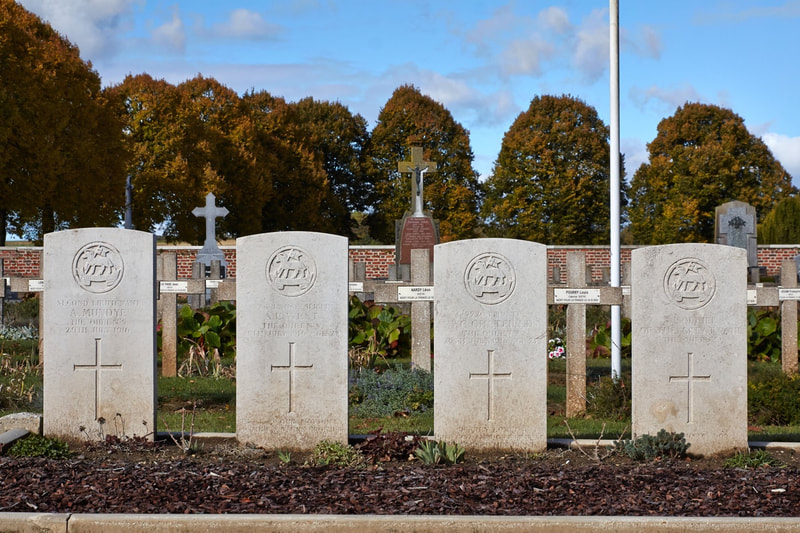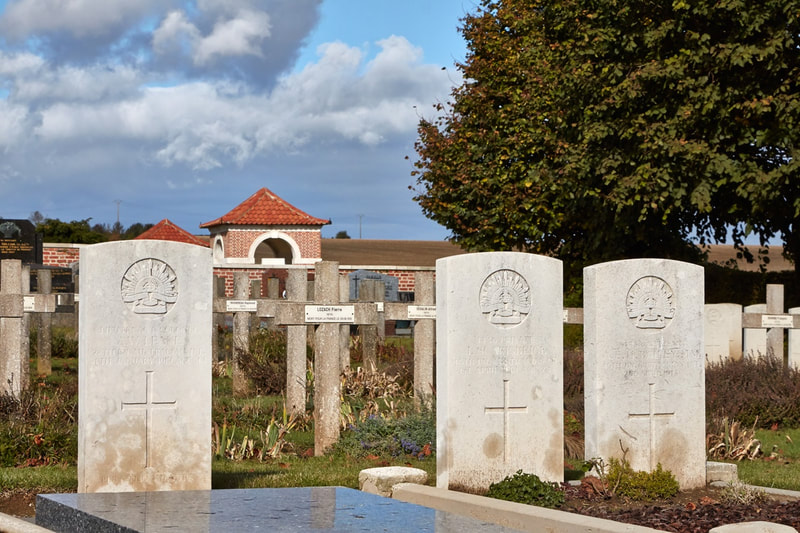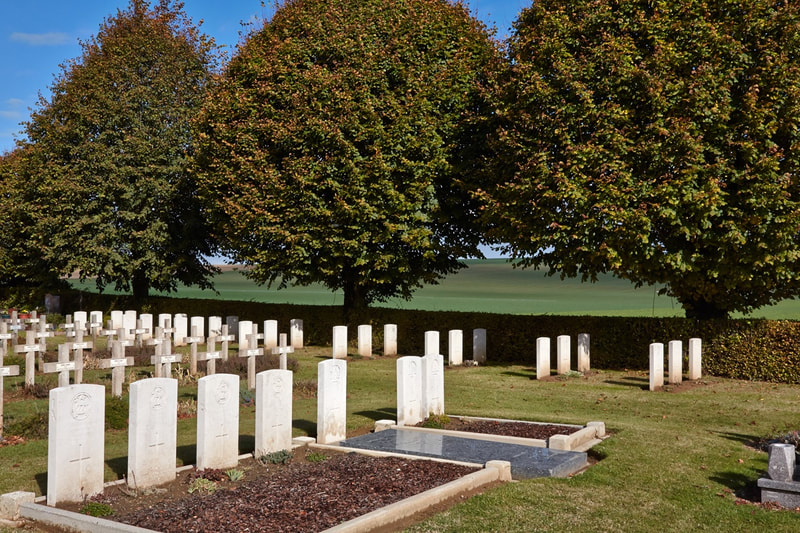DERNANCOURT COMMUNAL CEMETERY
Somme
France
GPS Coordinates: Latitude: 49.97553, Longitude: 2.62618
Location Information
Dernancourt is a village 3 kilometres south of Albert. The Communal Cemetery is a little west of the village.
Historical Information
Field ambulances used the Communal Cemetery for Commonwealth burials from September 1915 to August 1916, and again during the German advance of March 1918. It contains 127 Commonwealth burials of the First World War and 1 German grave.
The XV Corps Main Dressing Station was formed at Dernancourt in August 1916, when the adjoining EXTENSION was opened. The 45th and 1st/1st South Midland Casualty Clearing Stations came in September 1916 and remained until March 1917. The 3rd Australian was here in March and April 1917, and the 56th from April 1917 to February 1918. The 3rd Casualty Clearing Station came in March 1918 but on 26 March, Dernancourt was evacuated ahead of the German advance, and the extension remained in their hands until the village was recaptured on 9 August by the 12th Division and the 33rd American division. In September it was again used by the 47th, 48th and 55th Casualty Clearing Stations under the name of "Edgehill", due to the rising ground on the north-west.
Total Burials: 128.
Identified Casualties: United Kingdom 123, Australia 3, Germany 1. Total 127.
Unknown Casualty: United Kingdom 1.
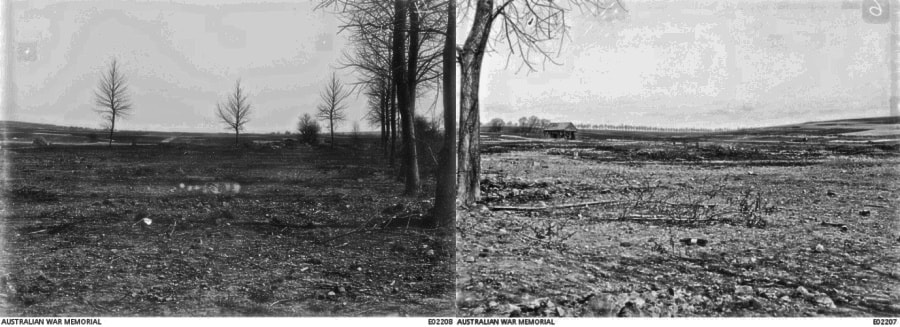
A view of the battlefield of Dernancourt. This area is where the 12th and 13th Australian Infantry Brigades broke the massed assaults of nearly four German divisions during their thrust towards Amiens on 5 April 1918. In the background on the far right are several unidentified structures. (Originally a 2 part picture)
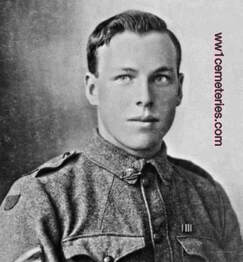
4488A Sergeant
Arthur Edward Henry Bailey, M. M.
45th Bn. Australian Infantry, A. I. F
2nd April 1918, aged 23.
Row A. 7.
Son of Arthur John and Naomi Ruth Bailey, of Rappville, New South Wales.
Cpl Bailey enlisted in the AIF in August 1915, and served on the Western Front with the 45th Battalion. He was awarded the Military Medal (MM) for his actions during an attack on a German strong point at Geudecourt on the morning of 21 March 1917, and was promoted to Sergeant (Sgt) in June 1917. Sgt Bailey was killed in action when he was struck by a piece of shell during the second Battle of Dernancourt on 2 April 1918, aged 23.
Arthur Edward Henry Bailey, M. M.
45th Bn. Australian Infantry, A. I. F
2nd April 1918, aged 23.
Row A. 7.
Son of Arthur John and Naomi Ruth Bailey, of Rappville, New South Wales.
Cpl Bailey enlisted in the AIF in August 1915, and served on the Western Front with the 45th Battalion. He was awarded the Military Medal (MM) for his actions during an attack on a German strong point at Geudecourt on the morning of 21 March 1917, and was promoted to Sergeant (Sgt) in June 1917. Sgt Bailey was killed in action when he was struck by a piece of shell during the second Battle of Dernancourt on 2 April 1918, aged 23.
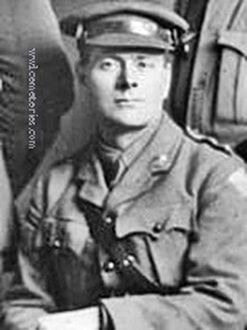
Lieutenant Colonel
Allan William Leane
28th Bn. Australian Infantry, A. I. F.
4th January 1917, aged 44.
Row A. 5.
Son of Thomas and Alice Leane; husband of Mrs. F. B. Leane, of Durham House, Hay St., Perth, Western Australia. Native of Adelaide, South Australia.
Allan William Leane
28th Bn. Australian Infantry, A. I. F.
4th January 1917, aged 44.
Row A. 5.
Son of Thomas and Alice Leane; husband of Mrs. F. B. Leane, of Durham House, Hay St., Perth, Western Australia. Native of Adelaide, South Australia.
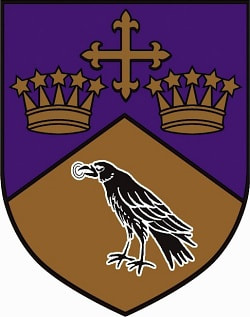
Second Lieutenant
Charles Robert Wiltshire
Bedfordshire Yeomanry
13th July 1916, aged 28.
Row K. 3.
Son of Charles George Moore Wiltshire and Alice Wiltshire, of 47, Hallingbury Rd., Brighton.
His headstone bears the inscription "In Loving Memory Of Our Dear And Only Son"
The information below supplied by 'The Ellesmerian Club', the alumni organisation for Ellesmere College where Charles was a pupil.
Charles Robert Wiltshire
Bedfordshire Yeomanry
13th July 1916, aged 28.
Row K. 3.
Son of Charles George Moore Wiltshire and Alice Wiltshire, of 47, Hallingbury Rd., Brighton.
His headstone bears the inscription "In Loving Memory Of Our Dear And Only Son"
The information below supplied by 'The Ellesmerian Club', the alumni organisation for Ellesmere College where Charles was a pupil.
Charles Robert Wiltshire was born in West Ham, Essex on 20th October 1888 to Charles George Moore and Alice Wiltshire. His father was employed as a marine engineer in 1891 and an “Engineer in Charge Practical” according to the census for those years. The family moved around the London suburbs during the early period of Charles’ life.
In September 1904, Charles started at Ellesmere College in the ‘Alfred’ dormitory but his stay was a brief one for he left at the end of that same term. It will never be known why the family decided to send him to a college so far north of the family home.
Where he went next is difficult to discover. It is presumed he returned south, somewhere in the London area, for he is described in the 1911 Census as being a Theology Student living at home, in East Ham, with his parents and only surviving sibling, a sister, Ellen Florence Alice. A brother, Bruce, had died aged five, in 1896.
Charles enlisted in the Inns of Court Officer Training Corps and, after he had completed his necessary training, he was gazetted 2nd Lieutenant in the 1st Cavalry Division, the Bedfordshire Yeomanry on 17th September 1915 and embarked for active service in France on 6th March the following year.
He died just over four months later on the 13th July 1916, one of the thousands killed during the Somme Offensive. On the very first day, 1st July, three Ellesmerians had died in action.
The Bedfordshires were in the second wave that attacked towards the village of Montauban. This village was quickly captured and held but was open to frequent and heavy counter-attacks and it was during one of these that Charles lost his life.
He did not marry and left his estate to his sister, Ellen, who lived with their parents in Brighton.
His body lies in Dernancourt Communal Cemetery.
In September 1904, Charles started at Ellesmere College in the ‘Alfred’ dormitory but his stay was a brief one for he left at the end of that same term. It will never be known why the family decided to send him to a college so far north of the family home.
Where he went next is difficult to discover. It is presumed he returned south, somewhere in the London area, for he is described in the 1911 Census as being a Theology Student living at home, in East Ham, with his parents and only surviving sibling, a sister, Ellen Florence Alice. A brother, Bruce, had died aged five, in 1896.
Charles enlisted in the Inns of Court Officer Training Corps and, after he had completed his necessary training, he was gazetted 2nd Lieutenant in the 1st Cavalry Division, the Bedfordshire Yeomanry on 17th September 1915 and embarked for active service in France on 6th March the following year.
He died just over four months later on the 13th July 1916, one of the thousands killed during the Somme Offensive. On the very first day, 1st July, three Ellesmerians had died in action.
The Bedfordshires were in the second wave that attacked towards the village of Montauban. This village was quickly captured and held but was open to frequent and heavy counter-attacks and it was during one of these that Charles lost his life.
He did not marry and left his estate to his sister, Ellen, who lived with their parents in Brighton.
His body lies in Dernancourt Communal Cemetery.

1st May 1918; The German offensive, 1918, its extreme forward limit at Dernancourt. Part of the battlefield of Dernancourt, near Albert, showing the village and church held by the Germans, and the railway line on which the 4th Australian Division originally relieved parts of the 9th and 35th British Divisions. After being checked here for a week, the Germans upon 5 April made with several Divisions a final attempt to break through towards Amiens. During the afternoon they had attained a position well up the hill in the foreground, but a counter attack at this juncture thrust them half way down the slope. (The photograph was taken from the Australian front line, and shows the German trench at the point where the German thrust was stopped).

